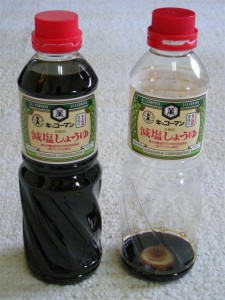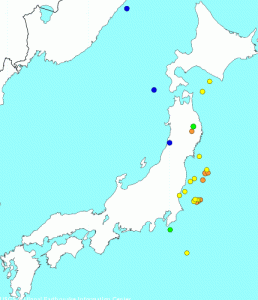It’s time I talked about the weather in Matsuyama.
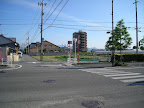
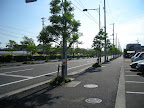 Here is one of the corners on my way to work. The small road on the left will take you to my apartment, the large road to the right will take you to ALS Matsuyama. I think I’ve mentioned before that Matsuyama reminds me very much of San Diego. So much so, in fact, that I’ve begun to think of it as a smaller Japanese version of that beautiful southern California city (minus the plastic aesthetic).
Here is one of the corners on my way to work. The small road on the left will take you to my apartment, the large road to the right will take you to ALS Matsuyama. I think I’ve mentioned before that Matsuyama reminds me very much of San Diego. So much so, in fact, that I’ve begun to think of it as a smaller Japanese version of that beautiful southern California city (minus the plastic aesthetic).
Despite its importance on the world stage, Japan is a small country, physically speaking. At about 375,000 km², it’s a little smaller than Montana and a little larger than Germany. One of the neat things about a country that size is that the nightly news gives weather for the entire country, rather than one local area or region. Not only that, but Japan’s newscasters must have some weird 6th sense (Shirley MacLaine, not M. Night Shyamalan) that allows them to determine the precise times, locations, and magnitudes of weather patterns in three hour blocks.
Seriously, the local nightly news here not only gives temperatures throughout the day, it tells you what time it’ll start raining tomorrow and what time it’ll stop. Unfortunately, only the national news is simulcast in English, and having just recently acquired internet access at home, I’m not yet accustomed to checking the forecast online.
This brings us to the trigger that convinced me to write about the weather in the first place.
On Thursday, there was a light rain in the morning that let up around the time I needed to leave for my Japanese lesson. Smiling at the clearing sky for cooperating with my need to hurry and get there on time, I set off on my bicycle sans umbrella.
A light mist started falling almost immediately, and the skies darkened the further I got from my apartment. Ten minutes into the twenty minute ride, I was severely punished for my foolishness when the rain really got going. Fat raindrops fell in my eyes and soaked the front of my shirt and shorts. Knowing I was soaked either way, I kept going to my lesson, arriving dripping wet.
I wasn’t really sure what to do at that point, as I had no way of drying myself. Paper towels are virtually nonexistent in Japanese bathrooms. Most small and medium sized businesses rely on you to bring your own towel. I kid you not- my school and many restaurants are the same way. I’ve asked a few Japanese people in Matsuyama, they’ve all said that Japanese people always carry around a washcloth or handkerchief, at least. Large businesses that expect foreign visitors might have an air dryer, but EPIC doesn’t have one of those.
So I found my teacher, and of course she started laughing the moment she saw me, asking “Didn’t you look at the weather forecast?”
“No,” I said, “unfortunately I did not.”
Then she surprised me by going to the front counter and asking to borrow a towel on my behalf. The woman stifled a laugh when she saw me and quickly brought out a towel from what I think is the employee lounge. Anyway, I dried what I could and tried to hand it back to the woman, but my teacher told me to take it home, wash it, and bring it back on Monday. “It’s the Japanese way,” she said.
Surprised and thankful, I said I would do just that.
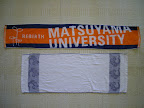 Here’s a picture of the Matsuyama University towel I was lent. Beneath it is the towel (I got from an onsen that) I will start carrying with me.
Here’s a picture of the Matsuyama University towel I was lent. Beneath it is the towel (I got from an onsen that) I will start carrying with me.
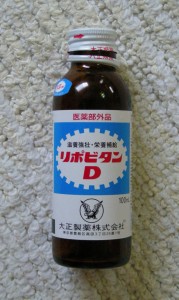 While I’m posting odd pictures, here’s one of a drink I tried a few days ago called Ripobitan D (リãƒãƒ“タン D). It’s produced by Taisho Pharmaceutical Co., Ltd, and comes in a little glass bottle that looks and feels just like a medicine bottle. I bought it from a vending machine in front of my school when I was looking for a quick pick-me-up and wanted to try something new.
While I’m posting odd pictures, here’s one of a drink I tried a few days ago called Ripobitan D (リãƒãƒ“タン D). It’s produced by Taisho Pharmaceutical Co., Ltd, and comes in a little glass bottle that looks and feels just like a medicine bottle. I bought it from a vending machine in front of my school when I was looking for a quick pick-me-up and wanted to try something new.